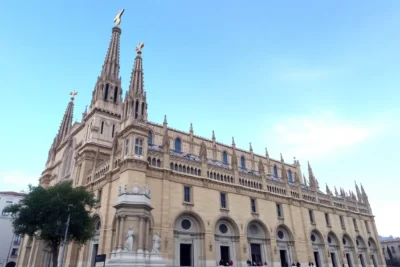
Barcelona is a city where architectural creativity flourishes, showcasing a rich tapestry of styles that span centuries. From the iconic designs of Antoni Gaudí to the majestic Gothic structures, the city's skyline is a testament to its vibrant history and artistic brilliance.
In this journey, we will explore the stunning contrasts and harmonious beauty of Barcelona's most significant landmarks. From Sagrada Familia to Barcelona Cathedral: Exploring Barcelona's Architectural Marvels reveals how these structures not only define the city’s aesthetic but also narrate the stories of its past and cultural evolution.
Exploring the Architectural History of the Sagrada Familia
The Sagrada Familia, designed by the visionary architect Antoni Gaudí, stands as a remarkable example of Catalan Modernism. Construction began in 1882, and it has captivated countless visitors with its intricate details and innovative design. Gaudí's approach to architecture was deeply influenced by nature, leading him to incorporate organic forms and structures that mimic the natural world.
One of the defining features of the Sagrada Familia is its use of hyperboloid structures and parabolic arches, which allow for greater stability and aesthetic appeal. The basilica's towers, reaching heights of up to 172.5 meters, are designed to reflect the spiritual journey of ascension. Each tower represents a different biblical figure, contributing to the overall narrative of the building.
This architectural masterpiece is not only an iconic symbol of Barcelona but also a site of ongoing craftsmanship and dedication. With an estimated completion date set for 2026, the Sagrada Familia continues to evolve, showcasing a blend of traditional techniques and modern technology. Visitors can witness the craftsmanship firsthand through guided tours that delve into its intricate history and design philosophy.
- Foundation: Began in 1882
- Architect: Antoni Gaudí
- Style: Catalan Modernism
- Completion Year (projected): 2026
Barcelona Cathedral: A Gothic Masterpiece in the Heart of the City
Situated in the heart of the Gothic Quarter, the Barcelona Cathedral, also known as the Cathedral of the Holy Cross and Saint Eulalia, represents a stunning example of Gothic architecture. Its construction began in the 13th century and was completed in the 15th century, making it a vital part of Barcelona's historical and architectural landscape. The cathedral's façade, adorned with intricate sculptures and flying buttresses, captivates visitors from the moment they approach.
This majestic structure features several key elements that highlight its Gothic style:
- Imposing Towers: The cathedral boasts four towering spires that reach towards the sky, symbolizing the connection between heaven and earth.
- Beautiful Stained Glass: Inside, the colorful stained glass windows create a mesmerizing play of light, enhancing the spiritual atmosphere.
- Serene Cloister: The tranquil cloister, home to a flock of geese, offers a peaceful retreat and reflects the monastic traditions of the past.
Visitors can explore the cathedral’s rich history through its various chapels and altars, each telling a unique story related to Barcelona's patron saint, Saint Eulalia. The high altar features a stunning golden retablo that draws the eye and invites contemplation. Additionally, the cathedral is a center for various religious ceremonies and events, maintaining its significance in the city's cultural life.
One of the highlights of the Barcelona Cathedral is its roof, which offers panoramic views of the city. Climbing to the top of the towers rewards visitors with breathtaking vistas of both the Gothic Quarter and the famous Sagrada Familia in the distance. This experience encapsulates the architectural marvels that coexist in Barcelona, showcasing the city's rich heritage and architectural diversity.
Comparing the Sagrada Familia and Barcelona Cathedral: Styles and Significance
The Sagrada Familia and Barcelona Cathedral stand as two monumental icons of architectural excellence, each reflecting distinct styles and historical significance. While the Sagrada Familia is a testament to Catalan Modernism with its fluid forms and intricate details, Barcelona Cathedral embodies the grandeur of Gothic architecture through its soaring spires and elaborate stonework. Their contrasting designs highlight the evolution of architectural movements in Barcelona.
In terms of construction periods, the contrasts between these two structures are notable:
- Sagrada Familia: Construction commenced in 1882 and is ongoing, with a completion target of 2026.
- Barcelona Cathedral: Construction began in the 13th century, culminating in the 15th century, anchoring it firmly in the Gothic era.
Each building also serves different spiritual purposes and cultural roles within the city. The Sagrada Familia is a symbol of devotion and artistic innovation, attracting millions of visitors who marvel at Gaudí's vision. In contrast, Barcelona Cathedral functions as a pivotal religious site, hosting ceremonies and offering a connection to the city's rich ecclesiastical history. Their significance is deeply intertwined with the identity of Barcelona.
To illustrate the differences further, consider the following comparison table:
| Feature | Sagrada Familia | Barcelona Cathedral |
|---|---|---|
| Architectural Style | Catalan Modernism | Gothic |
| Construction Start | 1882 | 13th Century |
| Completion Year (Projected) | 2026 | 15th Century |
| Key Features | Organic forms, hyperboloid structures | Flying buttresses, stained glass |
Top Architectural Highlights to Discover in Barcelona
Barcelona is home to an array of architectural marvels that showcase its rich cultural heritage. Among the top architectural highlights to discover, you will find the stunning Park Güell, another of Gaudí's masterpieces. This colorful park is filled with whimsical structures and vibrant mosaics, offering visitors a unique blend of nature and art. As you stroll through its pathways, the intricate designs and panoramic views of the city create an unforgettable experience.
Another must-visit landmark is the Casa Batlló, which exemplifies Gaudí's innovative style. The building, with its skeletal facade and flowing lines, is often referred to as the "House of Bones." Its interior is equally mesmerizing, featuring organic forms and vibrant colors that transport visitors into a dreamlike world. The rooftop, adorned with dragon-like scales, is a testament to Gaudí's ability to merge architecture with fantasy.
For those interested in the city's Gothic heritage, the Palau de la Música Catalana is an architectural gem that should not be missed. This concert hall, designed by Lluís Domènech i Montaner, is a UNESCO World Heritage site known for its stunning stained glass and intricate mosaics. The vibrant colors and elaborate details create a feast for the eyes, making it a quintessential example of Catalan Modernisme.
Lastly, exploring the Hospital de Sant Pau provides insight into the evolution of Barcelona's architecture. This complex, designed by Lluís Domènech i Montaner, showcases beautiful Art Nouveau structures set within lush gardens. The intricate tile work and ornate sculptures reflect the artistic movements of the early 20th century, making it a fascinating destination for those interested in the city's architectural diversity.
The Influence of Antoni Gaudí on Barcelona’s Urban Landscape
Antoni Gaudí's impact on Barcelona’s urban landscape is profound, with his visionary works embodying the city's unique architectural identity. His distinctive style, characterized by organic forms and vibrant colors, has transformed ordinary cityscapes into extraordinary landscapes that reflect both nature and creativity. Gaudí’s architecture not only enhances the visual appeal of Barcelona but also contributes to its cultural richness, making the city a living gallery of Modernisme.
One of the most significant aspects of Gaudí’s influence is his ability to integrate architecture with the environment. Notable examples include Park Güell and Casa Batlló, where he employed natural elements to create harmony between his structures and their surroundings. This relationship emphasizes the importance of sustainability in urban design, showcasing how architecture can coexist with nature while enhancing the urban experience.
Moreover, Gaudí's work has inspired countless architects and artists, fostering a legacy that extends beyond Barcelona. His approach to spatial design encourages innovation and creativity, influencing contemporary architectural practices worldwide. The Sagrada Familia, still under construction, exemplifies this ongoing dialogue between past traditions and future possibilities, drawing millions of visitors and contributing significantly to the local economy.
In summary, Gaudí's architectural genius has shaped Barcelona into a vibrant tapestry of styles, inviting exploration and admiration. His masterpieces serve as both cultural landmarks and symbols of artistic innovation, reinforcing the city's status as a hub for architectural marvels. Through his work, Gaudí has not only left an indelible mark on the city but has also ignited a passion for creativity that continues to inspire new generations.
Visiting Barcelona’s Iconic Structures: Tips and Recommendations
When visiting Barcelona's iconic structures, it's essential to plan your trip wisely. Start early in the day to avoid crowds, especially at popular sites like the Sagrada Familia and Barcelona Cathedral. Consider purchasing tickets online in advance to secure your entry and save time. Additionally, joining a guided tour can provide deeper insights into the architectural significance and history of these landmarks.
While exploring these architectural marvels, take advantage of the following tips to enhance your experience:
- Wear comfortable shoes: You'll likely be doing a lot of walking.
- Capture the details: Bring a good camera or smartphone to photograph the intricate designs and stunning views.
- Respect the local customs: When visiting religious sites, dress appropriately and observe quietness during services.
Don't miss the opportunity to explore the surrounding neighborhoods. Areas like the Gothic Quarter and El Born offer charming streets filled with shops, restaurants, and additional historical sites. Enjoying a meal at a local tapas bar can enhance your visit by providing a taste of Catalan culture alongside the stunning architecture.
As you venture from the Sagrada Familia to the Barcelona Cathedral, consider planning a route that includes other lesser-known architectural gems, such as the Casa Vicens or the Palau Güell. These sites showcase the rich diversity of Barcelona's architectural landscape and provide a more comprehensive understanding of the city's artistic evolution.
En este sentido, te invitamos a ver el siguiente video que explora las maravillas arquitectónicas de Barcelona, desde la Sagrada Familia hasta la Catedral de Barcelona.

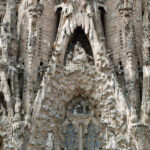 Sagrada Familia Closed?
Sagrada Familia Closed?If you want to know other articles similar to From Sagrada Familia to Barcelona Cathedral: Exploring Barcelona's Architectural Marvels you can visit the category Sagrada Familia.
Leave a Reply

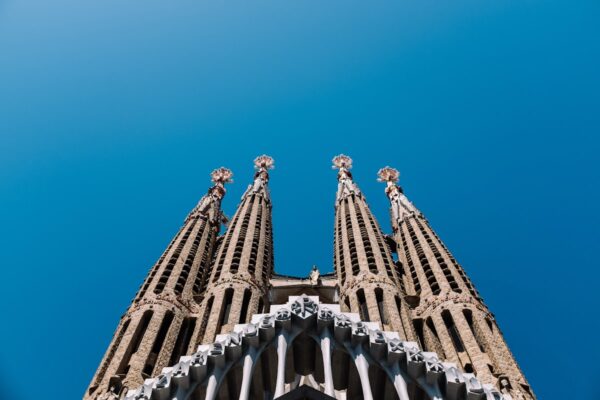
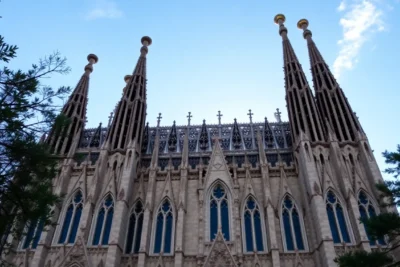
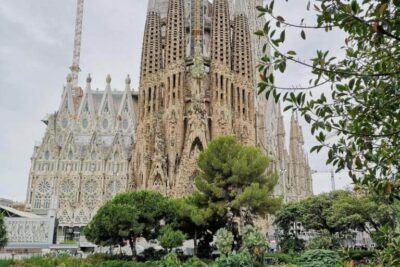
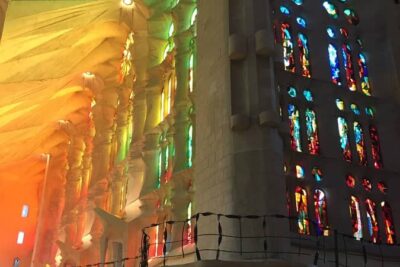
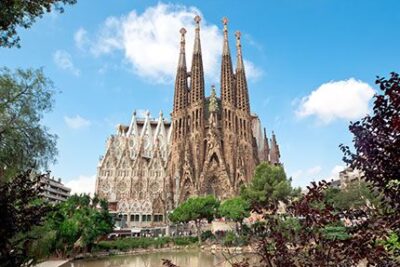
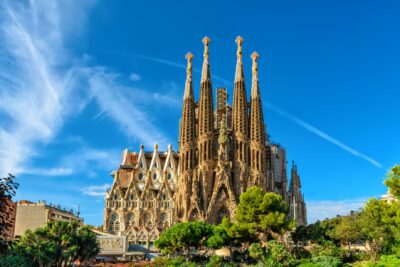
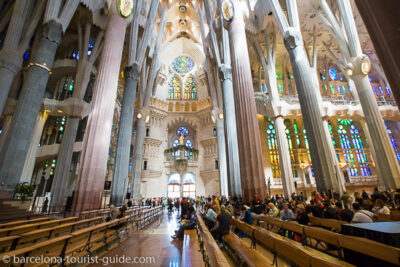
Read more!